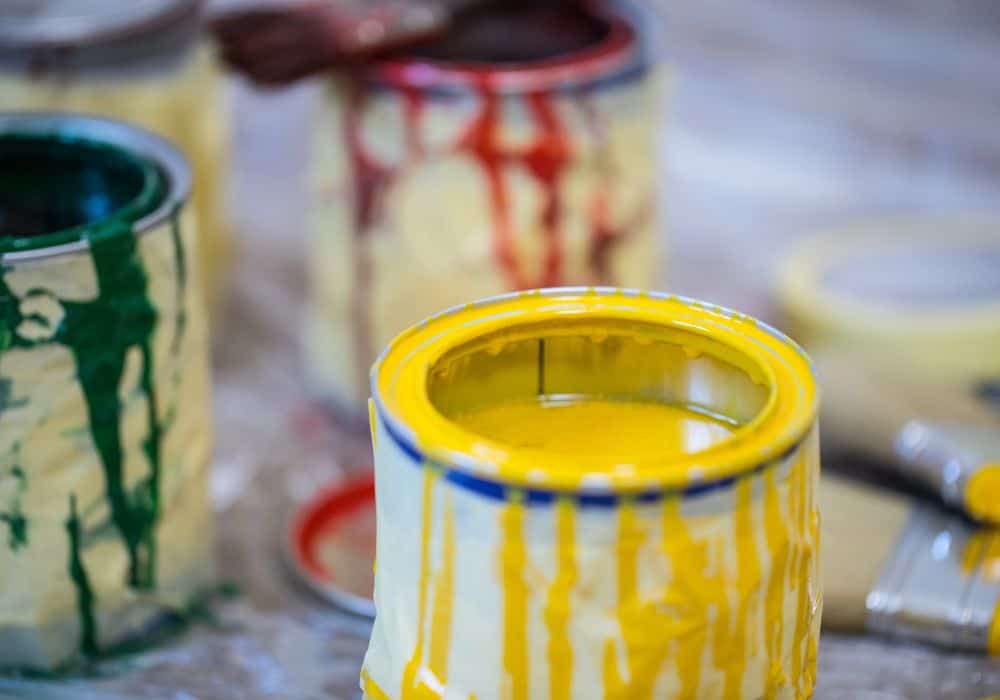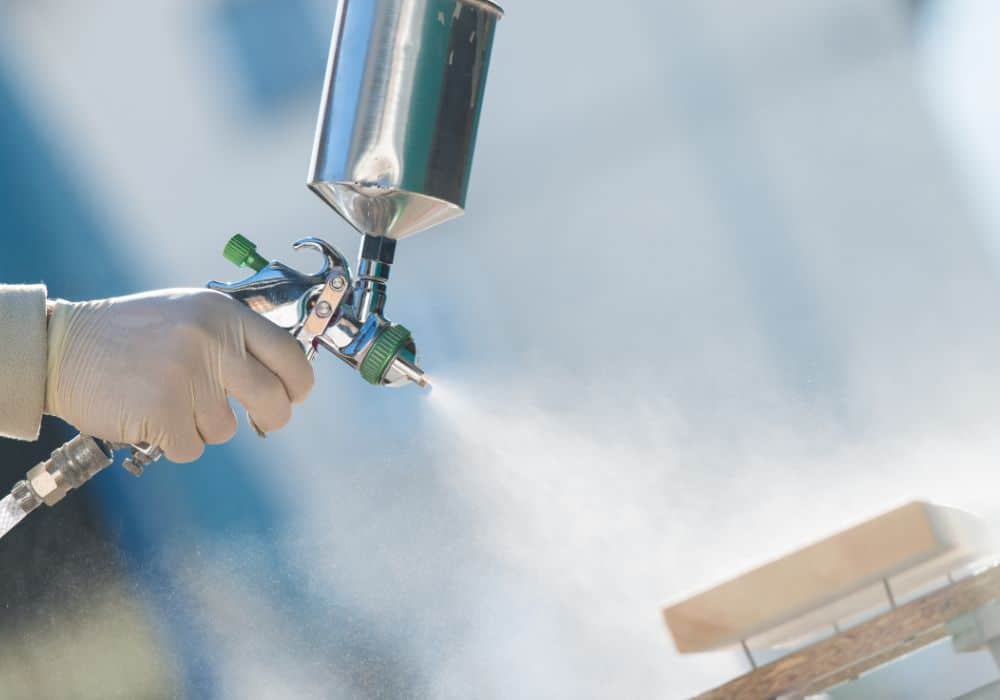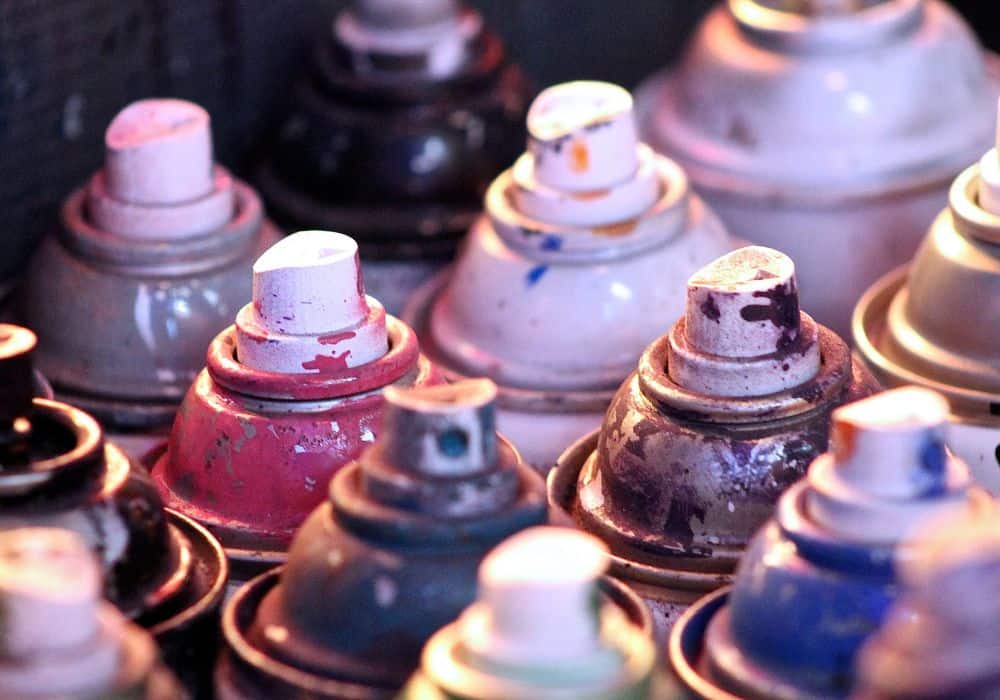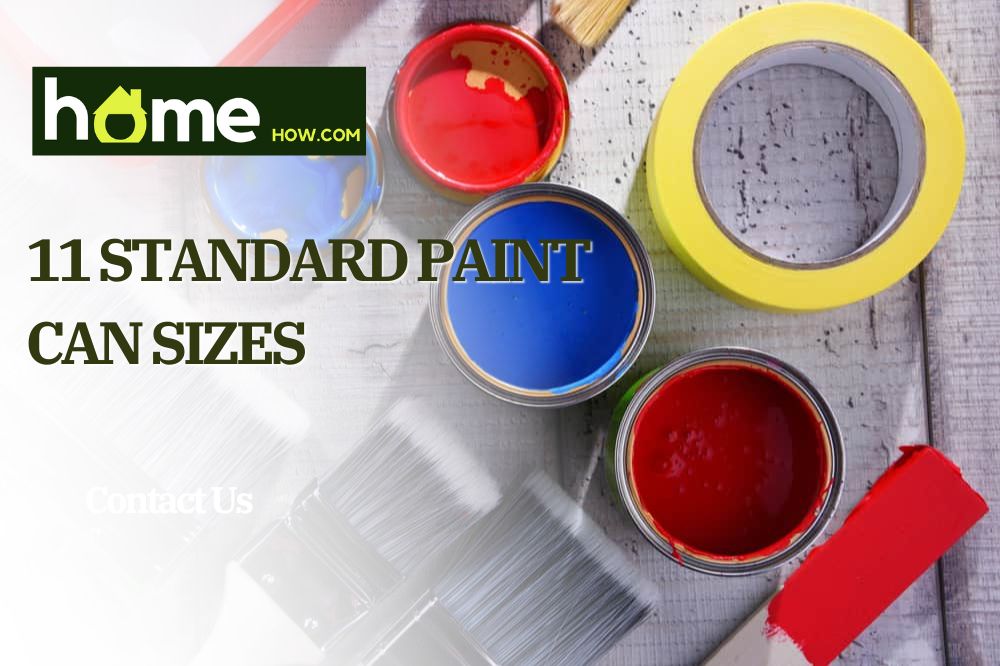Are you looking to update or create a new vibe for your home using paint? If yes, you’ve stopped at the right page.
Hands down, painting is the most effective way to revamp your home. From enhancing your celling to making rooms bigger and brighter, a fresh coat of paint promises you the transformation you desire.
But before taking on any painting project, you need to know how much paint you require. That means learning about the standard paint can sizes, coverages, and dimensions.
In this comprehensive guide, we will discuss everything on the most common sizes of paint cans to help you select the right paint quality and quantity for your project.
What Sizes Does Paint Come In?
Paint cans come in a variety of sizes depending on your project’s needs. The most common paint sizes include 1 pint, 1-quarter, and 1 gallon.
But you’re not limited to these sizes alone. If you’re handling a big project, you can shop for five-gallon buckets of paint. In between, there are also several intermediate sizes like half-pints and half-gallons.
By understanding paint sizes, you can plan for your projects more effectively and reduce costs and waste.
With that in mind, below is a list of different volumes of paints you can buy on the market and how much area they can cover.
1. Quarter Pint
The quarter-pint (0.14 liters) cans are perhaps the smallest paint sizes you can find in your local store. Measuring 2” in height and 2.5” in diameter, the paint is enough to cover a wall area of 12 square feet (sq. ft). The size is perfect for individuals who want to try out a new color or use it for touch-up work.
2. Half-Pint
Unlike quarter-pints cans, the half-pint can cover an area of approximately 25 square feet. However, the paint can is still small. It measures 3” in height and 2.88” in diameter and can hold only 0.28 liters of paint.
Although it doesn’t offer much coverage, the half-pint will suffice for trim work and some last-minute touch-ups.
3. One-Pint
The one-pint size holds 0.47 liters of paint. The dimensions of the can are 3.99” in height and 3.5” in diameter. It offers a coverage of about 50 square feet.
Since one-pint offers limited covers, you’re better off using the paint for touch-up jobs. It’s also a common choice for trim work and small pieces of furniture.
4. One-quart

A one-quart paint size offers coverage of 100 square feet with one coat. However, this paint can is often forgotten because it falls in between the popular half-gallon and one-pint.
With a height of 4.88” and a diameter of 4.25”, the one-quart holds about 0.95 liters of paint. This size is enough for crown moldings, closets, adding details, and small furniture pieces.
5. Half-Gallon
Another common paint can size is the half-gallon. It holds 1.9 liters of paint and measures 5.38” in length and 5.88” in diameter.
Unlike the one-quart paint size, the half-gallon of paint provides you with more coverage. You can use it to paint a wall area of approximately 200 square feet.
The can size could be enough for a closet, a ceiling, or even two accent walls. But It’s more suited for small rooms, like laundry rooms and bathrooms. You will also have enough paint for different furniture pieces like dining or bedroom sets.
6. One-Gallon
With a height of 7.4” and a diameter of 6.5”, the one-gallon can cover about 400 square feet with one coat of paint. The can size holds a maximum of 3.8 liters of paint.
The one-gallon of paint is the most common go-to paint size can for most people. It provides enough coverage for walls in the laundry, home office, bathroom, and pantry. You can also use it to paint entire rooms and even ceilings depending on the room size.
7. 5 Gallon
As mentioned earlier, the 5-gallon paint buckets are perfect for large projects. A five-gallon bucket of paint holds 18.93 liters and can cover about 2,000 square feet of wall area.
It’s enough to paint two complete rooms. It’s also perfect for open-concept homes, where one or more common areas like a dining room and kitchen require a repaint in the same color.
However, your local hardware store might not stock this paint size. So, you might need to buy it from a professional paint supplier.
Standard Sizes for Spray Paints

Spraying paint is another simple way to bring life to aging furniture or to change the color of your shutters. Spray paints work by converting the liquified paint and gas into a fine mist. The paint gets stored in pressurized containers or aerosol cans that come in four standard sizes, including:
1. 4.5 Fluid Ounces
A 4.5 oz spray paint delivers coverage of 7 square feet. It’s perfect for small projects at home, like covering scratches on gutters and downspouts. It can also come in handy when adding highlights to many pieces of furniture.
2. 6 Fluid Ounces
While a 6 fluid ounces spray paint might cover a large surface area than 4.5-ounce spray paint, its coverage is still limited. It’s more suitable for quick makeovers like painting wicker furniture, reviving a register, or revamping doorknobs.
3. 12 Fluid Ounces
With a 12-fluid ounces spray paint, you can enjoy some slightly larger coverage for your projects. The paint covers approximately 20 square feet. You can use it to paint small and medium size furniture pieces, like dining chairs or moderately size office desks.
4. 16 Fluid Ounces
The 16-fluid ounces can is a common spray paint can size on the market. You can use it to paint an average area of 30 square feet. That means it’s enough for re-vamping furniture pieces, restoring old fireplaces, and updating windows and door frames.
How Much Paint Do I Need?
After picking the right paint color, the next most important step is to estimate the precise amount of paint you will need. This way, you can avoid wasting money on excess paint or making multiple trips back to the paint shop.
Below, we will discuss how you can determine the amount of paint you need to purchase.
1. Traditional Paint
The simplest way to estimate the amount of paint you need is to divide the square footage of the area you want to paint by the coverage offered by regular paint size.
For an in-depth understanding let’s use an example.
Let’s say you want to paint the wall of a 16 X 22 feet bedroom with an 8-foot ceiling, double door, and 2 windows. The first step is to determine the square footage of the wall.
To do that, you need to calculate the bedroom’s perimeter: (16ft + 22 ft) x 2 = 76 ft.
The total area of the wall: 76 ft x 8 ft = 608 sq. ft.
Now minus the area of the door (the standard area is 21 sq. ft) and windows (the standard area is 15 sq. ft) from the total wall area. That will give you 608 sq. ft – (21 sq. ft x 2) – (15 sq. ft x 2) = 536 sq. ft.
So, the total wall area you will need to cover is 536 square feet.
When you divide 536 sq. ft (square footage of the wall) by 200 sq. ft (coverage offered by a half-gallon of paint) you will get 2.68 gallons. So, your bedroom will need 2 half-gallon paint cans and about 1/2 -gallon cans.
2. Spray Paint

It’s hard to determine how much spray paint you will require for your project. More often, the amount of spray paint used usually varies, and it depends on how it’s applied and the amount of over-spray generated.
Generally speaking, the number of spray paint cans will depend on the square footage of the surface you wish to paint, the amount of paint in the cans, and how many coats you need to apply.
As for the amount of paint in the spray cans, the most popular volumes include 4.5 oz, 12oz, and 16 oz. Some manufacturers might even provide you with the estimated square footage of coverage offered by a spray can.
For the number of coats, you will get the best results if you use multiple thin coats. If your project requires bright spray paint colors like yellow or orange, you will need to invest in one or two additional coats. The brighter the color, the more coats of paint you will need.
You can use the formula above to determine the square footage of the area you want to cover with the spray paint. From there, divide the value by the coverage offered by the spray paint size to determine how many paint cans you will need.
Conclusion
Based on the above information, it’s clear that paint can size vary widely depending on the dimensions and coverage they offer.
Equipped with this knowledge, you can determine the proper size of paint for your home improvement projects. No more wastages or return trips to the hardware store for more paint.
However, it’s still a good idea to have a little extra for when you need to do touch-ups. Also, don’t forget to recycle the cans once you’ve finished painting.
Did this guide answer your questions? Please share your thoughts with us in the comment section.
